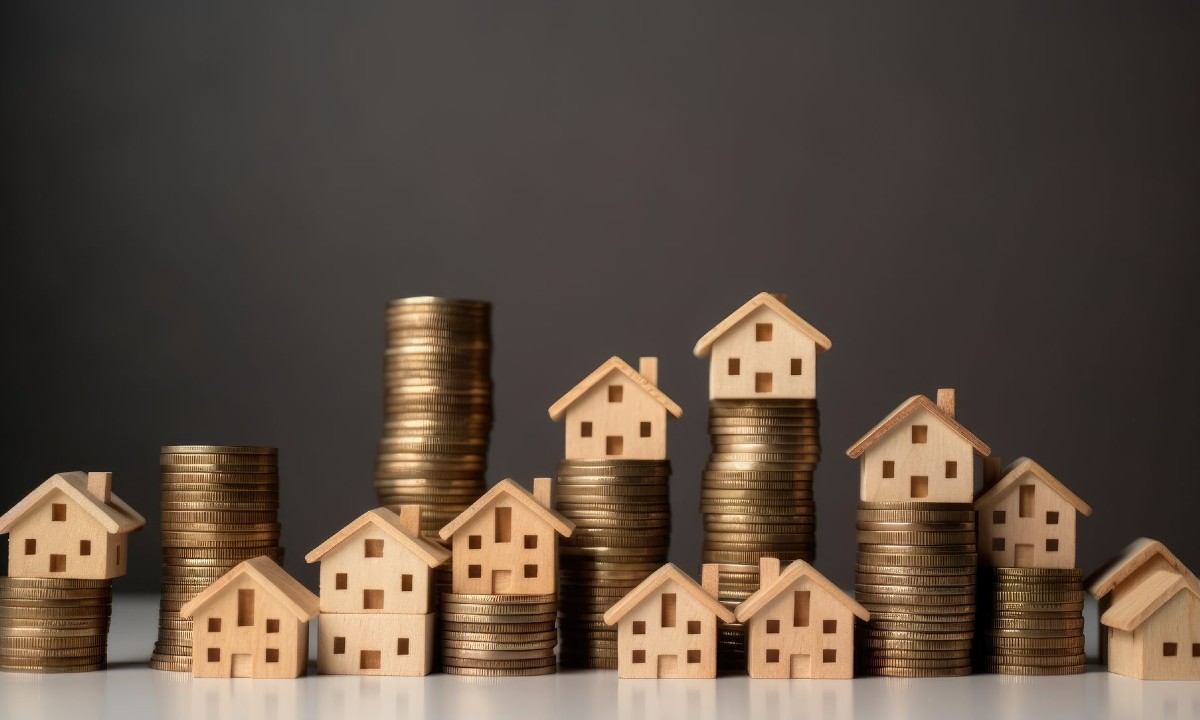![]()

Over the years, the real estate market in Malaysia has undergone a variety of fluctuations, which have been influenced by a variety of economic, social, and political factors. Understanding the primary factors that influence property prices is crucial for making well-informed decisions, regardless of whether you are considering investing in a residential or commercial property. This article will investigate the primary factors that influence property prices in Malaysia and assist you in navigating this ever-changing market.
1. GDP Performance and Economic Growth
The economy is one of the most significant factors that influences property prices in Malaysia. The demand for properties is directly influenced by economic growth, as measured by Gross Domestic Product (GDP). Businesses expand, employment opportunities increase, and consumer confidence increases when the economy is expanding. This results in an increase in property prices, as it increases the demand for both residential and commercial properties.
In contrast, the demand for properties may decrease as a result of the decline in consumer confidence, the increase in unemployment, and the scaling back of businesses during periods of economic downturn or recession. This typically results in decreased property prices as sellers alter their pricing strategies to appeal to potential purchasers.
2. Financing and Interest Rates
Property prices in Malaysia are substantially determined by interest rates. Borrowing costs for property purchasers increase when the central bank, Bank Negara Malaysia (BNM), raises interest rates. This results in a decrease in demand for properties, particularly in the residential sector, as home loans become more costly. Property prices may experience a stagnation or decline as a result of diminished demand.
On the other hand, when interest rates are low, financing becomes more affordable, and purchasers are more inclined to enter the market. Particularly in prominent locations, this heightened demand has the potential to elevate property prices. Consequently, interest rates are an essential factor for both investors and purchasers to evaluate.
3. Demand and Supply
Property pricing is significantly influenced by the fundamental economic principle of supply and demand. Prices tend to increase when the demand for properties exceeds the supply. This is frequently observed in highly urbanised regions, including Kuala Lumpur, Penang, and Johor Bahru, where the demand for residential and commercial properties is high as a result of population growth, urbanisation, and economic development.
In contrast, prices may decrease when the supply of properties exceeds the demand. An oversupply of properties can result from overbuilding or a slowdown in population development, which in turn reduces property prices by making it more difficult for developers and sellers to find purchasers.
4. Policies and Regulations of the Government
Property prices in Malaysia are significantly affected by government policies. The real estate market has been significantly impacted by policies such as the Malaysia My Second Home (MM2H) program, the Real Property Gains Tax (RPGT), and the introduction of the Goods and Services Tax (GST).
For instance, the MM2H program, which provides foreign nationals with the opportunity to acquire properties in Malaysia, has attracted foreign investment, particularly in regions such as Kuala Lumpur and Penang. This increase in the number of foreign purchasers has contributed to the increase in property prices in specific market segments.
However, short-term property speculation may be discouraged by taxes like the RPGT, which are imposed on gains from the sale of properties. Furthermore, the supply of properties can be influenced by government regulations on land use, zoning laws, and building permits, which in turn impact their prices.
5. Infrastructure Development and Location
Property prices in Malaysia are significantly influenced by their location. As a result of their accessibility, amenities, and desirability, properties located in prominent locations, such as the central business districts (CBD) of Kuala Lumpur or in close proximity to renowned landmarks, tend to have higher prices.
Property prices are significantly influenced by infrastructure development. The value of properties in the surrounding areas can be considerably increased by major transport developments, such as the MRT, LRT, and highways. For example, the value of properties in close proximity to MRT stations has increased significantly as transportation becomes more accessible, thereby simplifying the commute for residents.
In the same way, the construction of new business centres, retail malls, schools, and healthcare facilities can increase the appeal of an area, thereby driving demand and driving property prices higher.
6. The Cost of Living and Inflation
Property prices are also influenced by inflation and the general expense of living in Malaysia. The cost of construction materials, labour, and land increases as inflation increases, thereby increasing the price of new properties. Developers frequently transfer these elevated expenses to purchasers, which results in elevated property values.
Inflation can also diminish the purchasing power of prospective purchasers, thereby decreasing the demand for properties. The cost of living is on the rise, which may make it more difficult for individuals to save for a down payment or secure financing. This could lead to a decrease in property sales and potentially lower market prices.
7. Foreign Investment
Another significant factor that influences property prices in Malaysia is foreign investment. Malaysia has attracted foreign purchasers from countries such as Singapore, China, and the Middle East over the years. Property prices have increased, particularly in urban centres such as Kuala Lumpur and Penang, as a result of the influx of foreign capital.
The stable economy, attractive property market, and favourable exchange rates of Malaysia frequently attract foreign investors. Nevertheless, the level of foreign investment and property prices can be influenced by government policies that regulate foreign ownership, such as the establishment of a minimum purchase price for foreign purchasers.
8. Demographic Trends
The demand for properties in Malaysia is significantly influenced by demographics. The demand for residential properties in cities and municipalities has increased as a result of the increasing urbanisation of Malaysia’s population, particularly among young professionals and families. In response to this demographic transition, there has been an increase in the demand for affordable housing options, including condominiums and apartments.
Furthermore, the demand for retirement homes and healthcare facilities in Malaysia is being generated by the ageing population. This demographic trend has the potential to impact the prices of property in specific market segments, particularly those that pander to retirees or elderly residents.
9. Market Speculation and Developer Sentiment
Property prices can be significantly affected by developer sentiment. When developers are optimistic about the market, they are more likely to invest in new developments and infrastructure projects, which can help increase the value of property in the surrounding area. Conversely, if developers are overly cautious in response to market uncertainties, the supply of new properties may decrease, resulting in an increase in prices as a result of the restricted availability.
In the residential sector, market conjecture can also contribute to the increase in property prices. In certain instances, speculators acquire properties with the anticipation that their prices will rise in the future, thereby establishing a self-fulfilling cycle. Nevertheless, this can also result in price excesses that ultimately collapse when market conditions change.
10. Environmental Factors and Natural Disasters
Even though they are less predictable, environmental factors and natural disasters can also influence property prices in Malaysia. Property values may decline as a result of flooding, landslides, and other natural disasters that can inflict damage on properties and render certain regions less desirable to reside in.
In contrast, properties situated in areas with favourable environmental characteristics, such as proximity to parks, waterfronts, or natural reserves, are generally valued at a higher rate due to the allure of verdant spaces and pure air.
In conclusion,
Economic performance, interest rates, supply and demand, government policies, location, infrastructure development, and demographic trends are all factors that influence property prices in Malaysia. As a result, it is imperative for potential purchasers, investors, and property developers to monitor these critical factors when traversing the Malaysian real estate market. By remaining informed and comprehending these influences, you can make more informed decisions when purchasing or investing in property in Malaysia.
By taking these critical factors into account, you can develop a more comprehensive comprehension of the property market’s behaviour and make well-informed decisions. In order to mitigate risk and optimise returns, it is imperative to remain informed about economic conditions and market trends, as is the case with any investment.

How much housing loan you can get?

How much is your property worth?

Interested in new launch property?

Looking for property for sale or rent?
Subscribe to our email newsletter today to receive updates on the latest news, property guides, new launches, featured secondary market properties and special offers.
Reese Tan
Reese, a former traditional media writer, is now a Content Writer at Hartamas. She focuses on creating content to empower property seekers in their home-buying journey.
